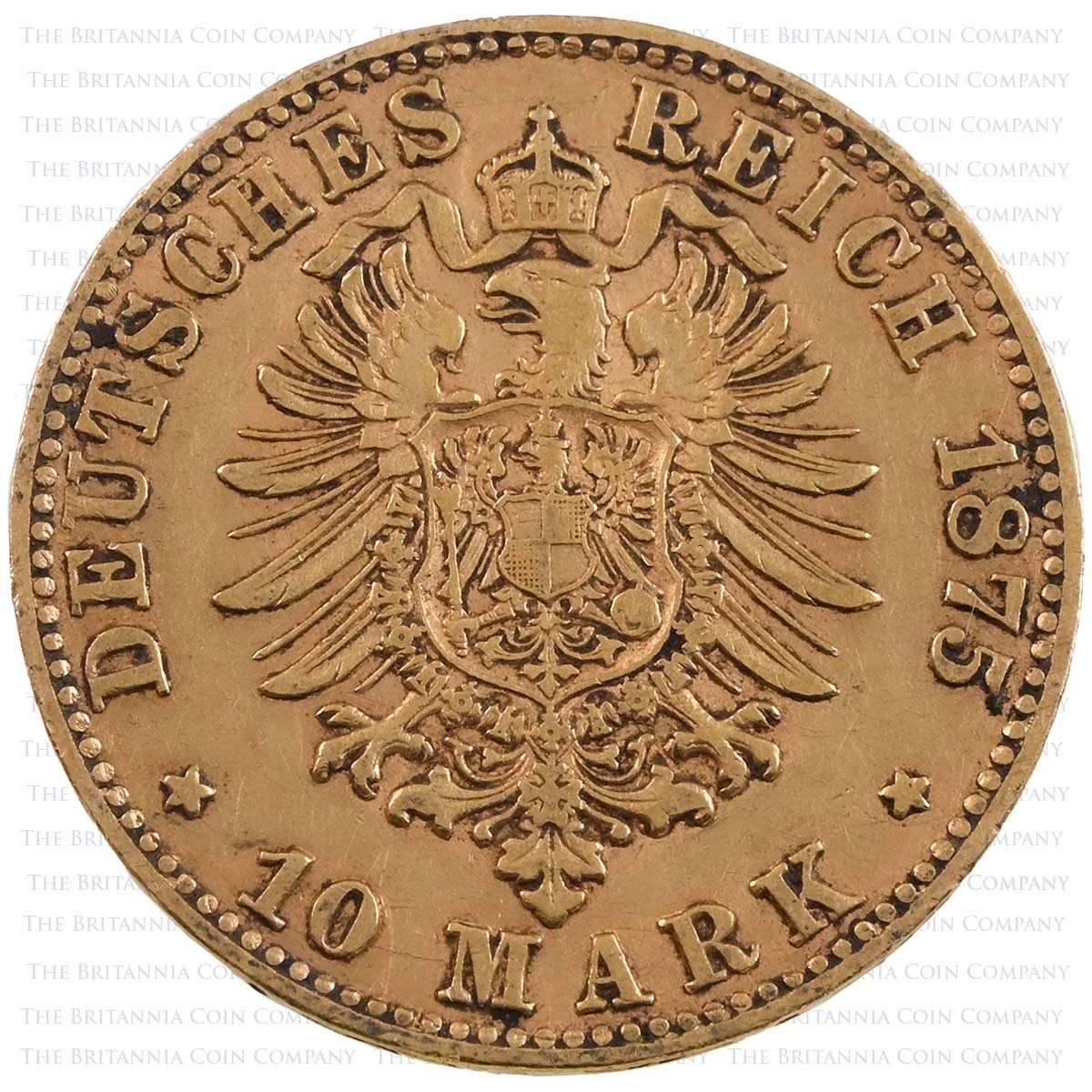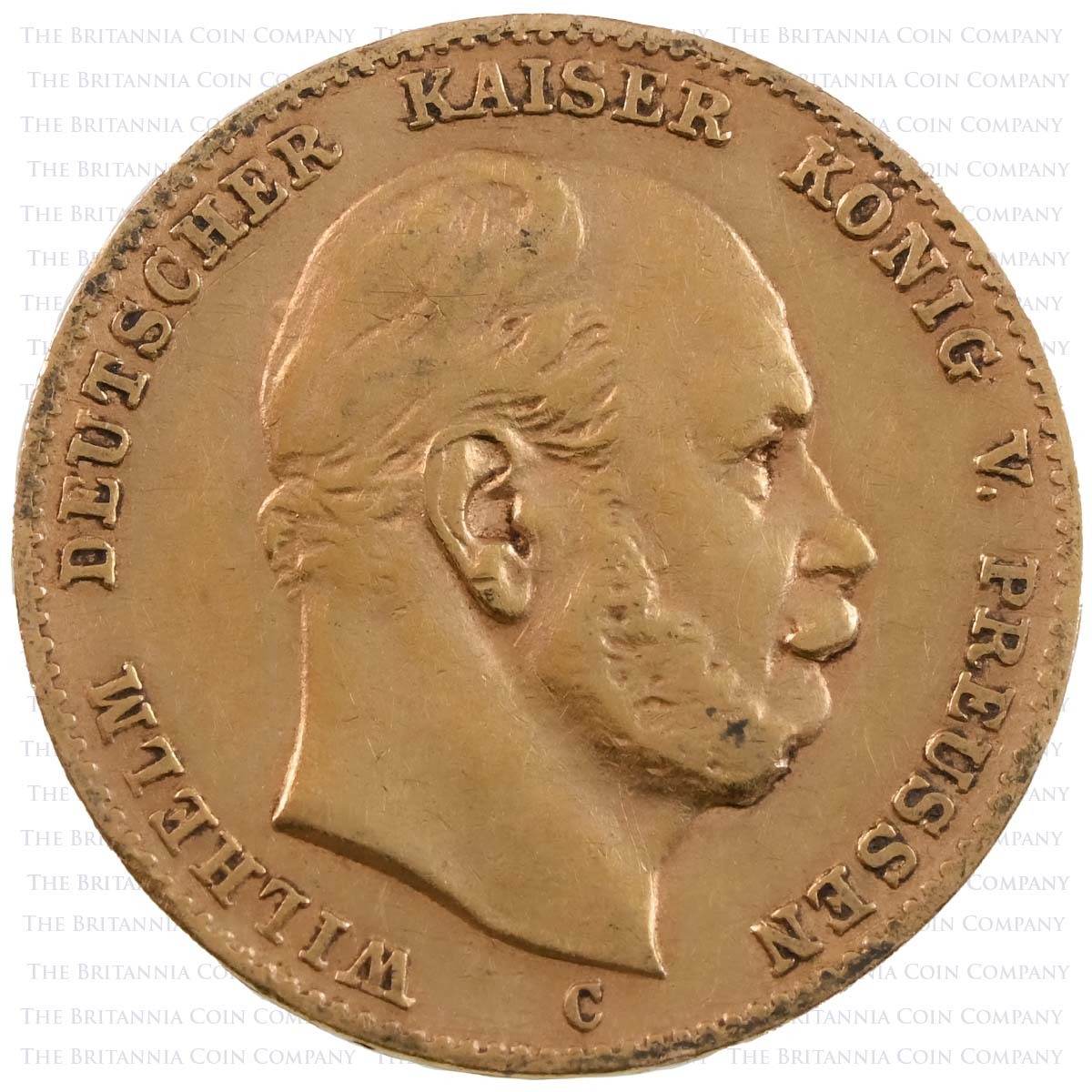Germany 10 Marks (Best Value)



90% gold German 10 Mark coins in our choice of date for our best value price.
History Of German Gold 10 Marks
The first 10 Mark coins were struck in 1872 from the five billion gold Francs, paid as war indemnity by France following the conclusion of the Franco-Prussian War. These funds were a boon to the new German Empire, founded in the waning days of the conflict.
In 1873 the Mark became the official currency of the Empire which transitioned to the gold standard in the same year, triggering a similar switch in several other European counties and the United States. A Mark was decimally divided into 100 Pfennig with new silver, copper and cupronickel coins, released into circulation alongside gold 10 and 20 Mark coins. This represented the culmination of a decades-long effort to unify the various coins and currencies in use across the old Confederation.
10 Mark coins were minted through the reigns of all three German Emperors: first Wilhelm I, then (briefly) his son, Frederick III, followed by his grandson, Wilhelm II. Our bullion stock mostly features Wilhelm I and Wilhelm II though these gold coins were also issued by the Kings and Grand Dukes of some of the Empire's 25 constituent states. Production ceased just before World War One, during which gold and silver coins fell out of circulation, replaced with the Papiermark then the Reichsmark.
A century later, these German coins are sought after by both collectors and investors who appreciate their gold content and intriguing history.
Composition Of Gold 10 Mark Coins
Gold 10 Mark coins are composed of 90% gold.
Each German 10 Mark coin weighs 3.98 grams and contains 3.58 grams or .115 troy ounces of pure gold. Copper was added to make these coins strong and hardwearing.
They measure 19.50 millimetres in diameter.
That means that these historic European coins are comparable in size and composition to the Half Sovereign though those British coins are composed of a slightly purer 22-carat gold, compared to the 21.6-carat gold used to strike German 10 Marks.
Because of their .900 gold composition, 10 Mark bullion coins are considered investment gold under British tax law. HM Revenue and Customs exempts high-purity coins, minted after 1800, that are or have been legal tender in their country of origin from VAT, making 10 Marks a tax-smart addition to your portfolio.
German 10 Mark Designs
Our stock of bullion 10 Mark coins includes gold coins issued by the first and last German Emperors.
10 Mark coins struck between 1872 and 1888 feature a bare-headed portrait of Wilhelm I to the obverse with the inscription: 'WILHELM DEUTSCHER KAISER KÖNIG V. PREUSSEN'. He was King of Prussia before he was appointed leader of a united Germany and the legend acknowledges both titles.
In March 1888 Wilhelm I's critically ill son, Frederick III, ascended the throne, ruling for only 99 days before his death in June. Frederick was succeeded by his own son Wilhelm II. Prussian gold 10 Marks bearing his portrait were struck from 1898 with an obverse inscription reading 'WILHELM II DEUTSCHER KAISER KÖNIG V. PREUSSEN'. The final gold issues of Wilhelm II's reign were made on the eve of the First World War. He abdicated in early November 1918, just before the armistice was signed, bringing hostilities to a halt.
A letter beneath the portrait indicates the location of the mint: 'A' for Berlin, 'B' for Hanover or a 'C' for Frankfurt am Main.
The reverse of these coins shows the imperial eagle, its wings raised, with the crown of the German Empire above. A recursive shield to the eagle's breast displays the arms of the House of Hohenzollern, the Empire's ruling dynasty. The design was the work of Berlin engraver Otto Schultz whose work would later be used on the South African Krugerrand.
The edge of 10 Mark coins bears a repeating inscribed pattern.
Investing In Gold 10 Mark Coins
There's a range of reasons you should consider these German gold coins as an addition to your portfolio:
- 90% Pure Gold: These coins contain 3.58 grams or .115 troy ounces of pure gold, comparable to British Half Sovereigns
- VAT Free: As investment gold, 10 Mark bullion coins are not subject to Value Added Tax in the UK and the EU making them a sensible investment
- Global Reputation: These German coins have been in circulation for a century and a half - gold buyers will instantly recognise them so its easy to cash them in when the time comes
- Historic Appeal: The fascinating story of these old coins takes us back to pre-war Europe and makes them an interesting piece to add to your stack
- Modest Size: At a fraction of the size of modern gold investment coins like Britannias and Krugerrands, the 10 Mark is an affordable bullion coin
Our best value gold 10 Marks are offered in good bullion condition. These coins did circulate so they will show the typical wear, minor scratches and dinks associated with a century of handling. None of these will impact the weight or appearance of these coins.
You'll receive our choice of date and Emperor from our current stock, all carefully authenticated by our expert staff.
How To Sell A German Gold 10 Mark?
Are you looking to sell your German 10 Marks? We buy these gold coins along with a wide range of bullion coins and bars from around the world for market-leading prices. Simply click the 'Sell To Us' button above or visit our Sell Your Coins page to get a custom quote.
Reviews
We are always proud to show off our previous customers experiences with you and what they thought of our purchasing through with Britannia Coins.

